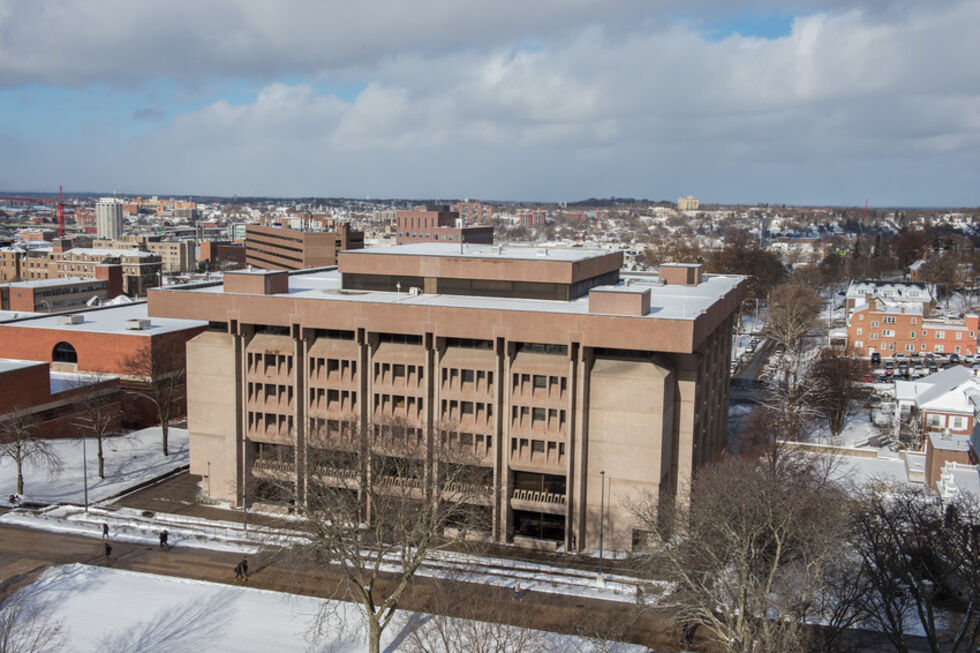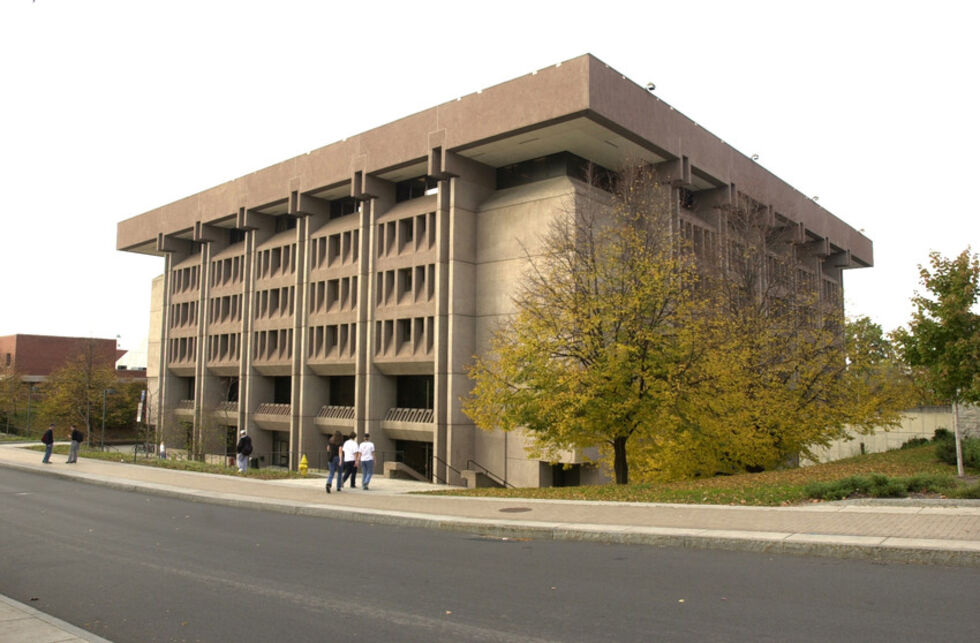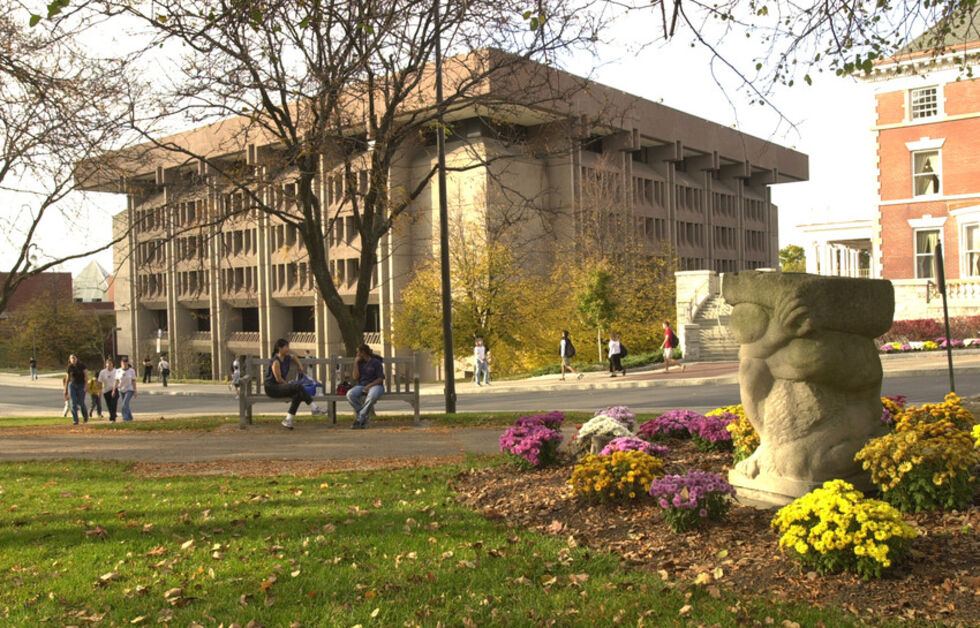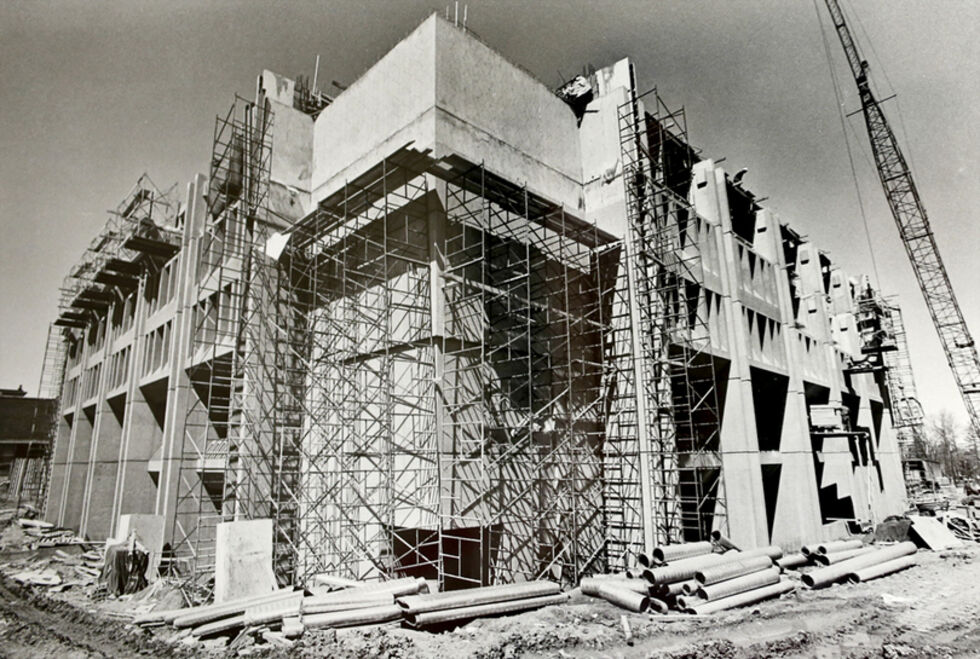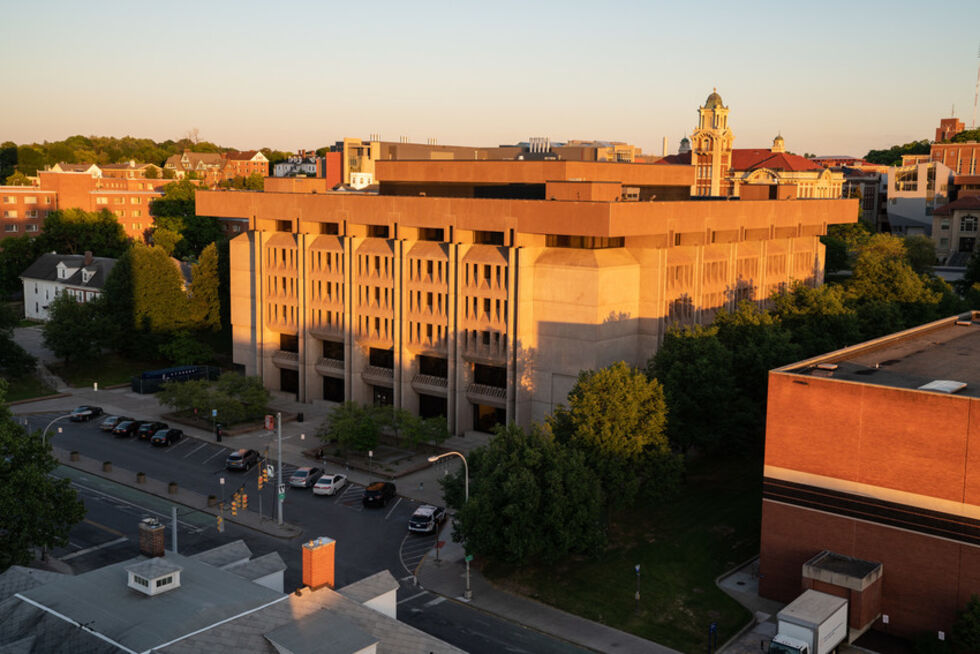Bird Library
"Ernest S. Bird Library" by King and King Associates , 1969-1972
As the main library on campus it houses over two million volumes that can be accessed by some of the most advanced information retrieval technology available. The library provides resources for humanities, social sciences, audiovisual resources, government publications, and maps. It includes the Learning Commons, an open, active environment for research assistance, group study, or individual study. Bird also includes the Digital Scholarship Space (DSS), a workshop, laboratory and classroom space designed for the study and creation of cutting edge digital artifacts and experiences. In addition, the library houses the Special Collections Research Center, Syracuse University Archives, Library administrative offices, and Pages, the library cafe. The library sits six floors high out of the ground above a basement.
The building was designed to offer an extraordinary amount of usable flexible space. There are as few load bearing walls as possible within the modular structure. The floors are large, open, and have the capacity to meet future needs for the rearranging of shelving, seating, and staff services. All design proportions in the building are derived from a calculated system of proportional measures. This guides the interplay of dramatic light and shadow around the building and sets up a pleasing rhythmic movement over the volume of the library. Geometrically patterned concrete enriches Bird Library with a sense of strength and texture. While the building makes tactile stylistic references to I. M. Pei’s Newhouse design, its scale is more massive, its detail less refined.
The library is named after its major donor, Ernest Stevenson Bird, graduate of the Class of 1916, College of Liberal Arts, donating $3 million for its construction. SU Chancellor William P. Tolley’s love of literature and books led him to establish Syracuse University Press in 1943 and to construct Bird Library in 1972. In 1968, it was estimated that the Carnegie Library contained twice the number of books and six times as many staffers as it had been intended to house. As a result, there was markedly little debate over whether a new library would be built; by 196I, it was an assumed fact. The actual financing and building of the new library came perilously close to being a financial fiasco, but instead resulted in what many observers call the crowning triumph of Tolley's chancellorship
The Bird Library was intended to be a general library for the social sciences and humanities, and would contain the central administrative and processing facilities for the University Library system. The Bird Library tripled the amount of usable square footage available on campus for library purposes.The new library, intended to signal Syracuse's emergence as a major research institution, forever altered the relationship between Walnut Park and the Lawn. Structural and mechanical service requirements are integrated into the aesthetic solution; double perimeter columns rising to cornice level are split to provide hollow duct spaces for vertical service runs; massive corner units provide aesthetic stability to the building composition and house corner escape stairs and service ducts. What made Bird special was its cast-in-place mix of concrete. The heavy concrete exterior contributes to the library’s “brutal style,” a type of architecture from the mid-20th century that emphasizes raw concrete.
Original plans for the library only detailed how it would function until the 1989-1990 academic year, according to university records. A thorough reconfiguration in 1991 dismantled the subject organization, placed the collections in one classmark sequence, added a variety of new study areas throughout the building, and reunited the distributed reference services in one prime location. In the summer of 1991, Bird Library’s entrance was reconfigured to what it is today. Originally, students had to cross a raised walkway to enter the library. Minor renovations began in the summer of 2005 to create a more welcoming, aesthetically pleasing, comfortable environment where members of campus and community can gather to explore and exchange ideas. Additional renovations include a café with adjacent soft seating and a repositioning of entrance and exit gates closer to the actual entrance ways to open up the entire floor.
Ernest Stevenson Bird was born on a farm in 1894 near Andover, New Jersey. Bird earned his Liberal Arts degree from Syracuse University in 1916. While at SU he had been a classmate and fraternity brother of Harold Tolley. Upon graduation, Bird started a career in secondary education. He taught math and science along with coaching at high schools in Ithaca, New York; Newark, New Jersey; and Wilmington, Delaware. He left the education world and became a salesman for the American Book Publishing Company. By the time he retired in 1946 he was the VP of Sales.
SU University Archives; Gorney, J. (2006). Syracuse University: An Architectural Guide. SU Press.; "Bird Library." University Archives: Buildings of SU; "Bird Library." SU Libraries website; Denton, V., et al. (2003). Syracuse University Campus Plan 2003. Syracuse Then and Now website; Stam, D. (2001). “Syracuse University Library History” An excerpt from the International Dictionary of Library Histories; Rose, K. (2017, September 26. “Bird Library was built 45 years ago. Now, the building’s future is uncertain under the Campus Framework plan.” Daily Orange; Greene, J. R. & Baron, K. A. (1995). “The Planning and Funding of the E. S. Bird Library in The Courier Libraries.” The Courier; SU Photo and Imaging Center; SU Archives, B+G Photograph Collection.
